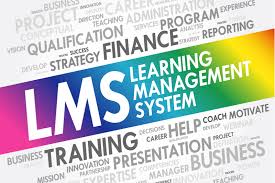In the face of crises, ensuring the seamless operation of emergency equipment is paramount. From hospitals to commercial buildings, having a robust emergency equipment management system in place is essential for safeguarding lives and assets. In this blog post, we delve into the significance of emergency equipment management, the role of facility management software, and the importance of emergency information software in maintaining operational continuity during emergencies.
The Importance of Emergency Equipment Management
Ensuring Availability
One of the primary objectives of emergency equipment management is to guarantee the availability of critical resources during emergencies. This includes medical supplies in healthcare facilities, fire extinguishers in commercial buildings, and safety gear in industrial settings.
Optimizing Inventory
Effective emergency equipment management involves optimizing inventory levels to prevent shortages or overstocking. By implementing robust inventory tracking systems, facilities can efficiently monitor stock levels and reorder supplies as needed, thereby minimizing disruptions during emergencies.
Regular Maintenance
Regular maintenance of emergency equipment is vital to ensure functionality when it’s needed most. Scheduled inspections, testing, and servicing of equipment such as fire alarms, defibrillators, and emergency lighting systems are essential to identify and address any issues promptly.
The Role of Facility Management Software
Centralized Database
Facility management software serves as a centralized repository for storing crucial information related to emergency equipment. This includes inventory data, maintenance schedules, and historical performance records, allowing facility managers to access real-time insights at their fingertips.
Automated Notifications
With facility management software, automated notifications can be set up to alert stakeholders about low inventory levels, upcoming maintenance tasks, or equipment malfunctions. These proactive alerts enable prompt action, reducing the risk of equipment shortages or failures during emergencies.
Data Analytics
Utilizing data analytics capabilities, facility management software can provide valuable insights into emergency equipment usage patterns, maintenance trends, and inventory consumption rates. By leveraging these insights, facilities can optimize their emergency preparedness strategies and resource allocation efforts.
The Importance of Emergency Information Software
Instant Accessibility
During emergencies, quick access to critical information can make all the difference. Emergency information software allows users to retrieve vital data such as evacuation plans, emergency contacts, and equipment locations instantly, facilitating timely decision-making and response efforts.
Cross-Platform Compatibility
Emergency information software seamlessly integrates with various platforms and devices, including mobile phones and tablets. This cross-platform compatibility ensures that essential information is accessible to all stakeholders, regardless of their location or device preferences.
Enhanced Collaboration
By providing a centralized platform for sharing and updating emergency information, emergency information software promotes collaboration among facility teams, first responders, and other stakeholders. This collaborative approach fosters efficient communication and coordination during crisis situations.
Conclusion
In conclusion, effective emergency equipment management, facilitated by facility management software and emergency information software, is crucial for maintaining operational continuity during emergencies. By prioritizing the availability, maintenance, and accessibility of emergency resources, facilities can mitigate risks, protect occupants, and ensure business resilience in the face of adversity.






